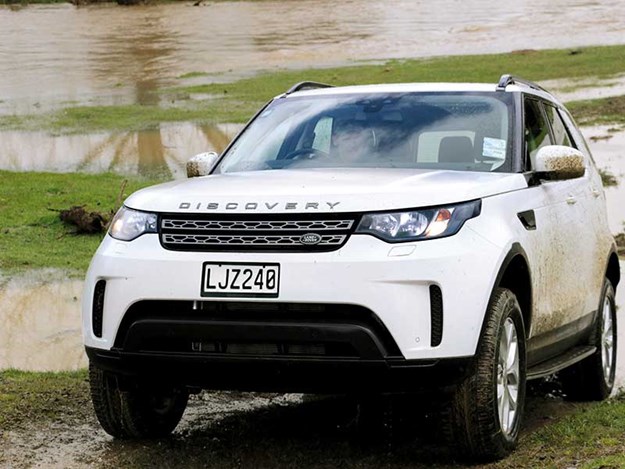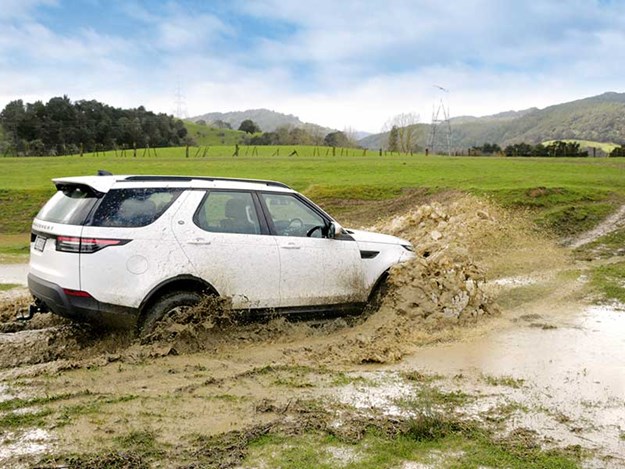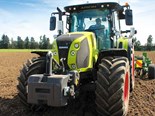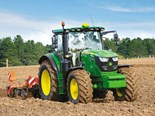Test: Land Rover Discovery Pioneer
Farm Trader’s Jaiden Drought takes the Land Rover Discovery Pioneer off-road and puts it through its paces on some wet and rugged farmland.
It is an interesting decision that many who work in the rural industries opt for a ute over a seven-seater, particularly now that performance and versatility are of key importance when it comes to investing in a vehicle that is just at home on the farm as it is in the city.
Ride height, cabin space and comfort are all as good, if not better, in some of the big SUVs available on the market. An extra bench in the back takes capacity from five up to seven and, let’s face it, a double cab ute often has to compromise on load space to make room for the seats.
 |
|
Inside and out, the Land Rover Discovery Pioneer still imparts a quality feel
|
A seven-seater SUV can still boast a big boot when needed. But what about their suitability for the back road, let alone the back paddock?
Enter stage left, the Land Rover Discovery Pioneer. It’s the latest solid offering from the Brit manufacturer that has been putting rugged gear for tearing around the backcountry together for decades. I’d say almost everyone would be familiar with the original Defender. This boxy off-roader started production in 1947, deep in the post-war era where the choice of colour was dictated by surplus military aircraft cockpit paint; early vehicles only came in various shades of light green.
While Land Rover and Range Rover product continued along in silos for the next few decades (the Range Rover having arrived in the early 1970s), 1989 saw the launch of the original Land Rover Discovery Series I.
Based on the chassis and drivetrain from the upmarket Range Rover – but with a lower price to attract the masses – the Discovery (or ‘Disco’ as it became known within about five minutes) melded together the go-anywhere nature of the Series I and II trucks with more of the creature comforts the Range Rover featured.
Fast forward to today and the Discovery is quite a different beast altogether. It features a lot of the standard equipment Range Rovers feature and also looks a lot more aspirational than ever before. But with that theme of bridging two established models in mind, the Land Rover Discovery Pioneer gives back to the Discovery faithful in terms of specification more suited to active duty out in a rural setting.
Inside and out, it still imparts a quality feel, with plenty of components carried over from its more expensive siblings in the current Discovery line-up but at $99,990 is aimed fairly and squarely at the Japanese and Korean seven-seater stronghold.
Engine
 |
|
A higher ride height makes the Discovery Pioneer a Land Rover true to its off-road heritage
|
Under its sleek bonnet, the Land Rover Discovery Pioneer features a big, gutsy three-litre V6 turbo, and it definitely packs a punch. Peak power of 190kW and 600Nm of torque are available. When coupled with the silky smooth eight-speed automatic transmission, a 0–100km/h time of 8.9 seconds is achievable. But with the Discovery’s 3.5-tonne towing capacity in mind, that torque figure is probably the key stat here.
Given the new regional fuel tax, the combined fuel efficiency figure of 7.2 litres per 100km could be a real game changer for those in the north of the North, while regardless of where you’re driving this big seven-seater, the safety tech this five-star ANCAP safety-rated model features will help keep everyone on board safe.
On the road
 |
|
The steering wheel features multi-use buttons, but isn’t completely festooned with them like some vehicles
|
By and large, these things are leaps and bounds ahead of your average ute in terms of on-road comfort. Not only is the engine more powerful but the transmission is also more refined and the ride is superb.
Unlike a ute, there is no wallowing in the bends or all the power in a lump after you’re half-way around the roundabout and have had your foot welded to the floor. And don’t get me started on turbo lag. The Discovery Pioneer has none of these issues, delivering smooth power from the time you put your foot on the accelerator and a planted yet agile feel around the city and on the motorway.
Off-road?
 |
|
The sleek body shape features improved aerodynamic properties... and creates a good bow wave, too
|
This is why they got a cow cocky to test it; not to see what it’s like on the motorway but if it cuts the mustard off the bitumen where utes are in their natural habitat. because there is certainly a contrast between the designer-inspired looks of the Land Rover and its roll-up-your-sleeves-and-give-a-flooded-river-crossing-a-crack-attitude.
Let’s be honest, though, this is a long way from getting out and engaging manual hubs. It misses out on Apple CarPlay, which is a noticeable deficit, but by and large, this thing is packed with technology. There is nothing worse than driving a car you don’t own over a rough off-road track, tensing at every bump for the fear of ripping the sump clean off. However, I needn’t have worried with wheel travel and ground clearances well beyond most wannabe off-roaders. It almost goes without saying that the Disco features a proper electronically-selectable low-range transfer box, various terrain management software settings, and permanent 4WD.
The Land Rover’s terrain response and hill descent systems work superbly. It feels (when driving) like the traction control is cutting out and you will free wheel and slide into the raging river in front of you, but the reality is it couldn’t be more from the truth. A small dial in the console features five terrain settings. Hill Descent and the Low Range are features that make this a serious off-roader, even on stock standard road tyres.
Interior
 |
|
Reversing up to the trailer is a cinch with a bright, clear screen in the centre console
|
Inside the cabin, the Discovery Pioneer has a practical yet informative approach. The hardwearing dash is built to a high quality with fit-and-finish that is spot-on. The heavy-duty cloth seats aren’t as fancy as the leather option in other Discovery grades, but they have a practical reason.
The Discovery features a good stereo with Bluetooth capability, satellite navigation, and a reversing camera. The steering wheel has the usual gadgets encompassed within the rim, and the Tiptronic paddles make you feel like an F1 driver if you really want to use them. The centre console neatly contains off-road modes, ride height, max speed limiter, eco engine stop-start, and handbrake. The rotary drive selector upfront rises or retracts once the vehicle is on or off respectively.
I’m a big guy, but the driving position felt spacious with plenty of leg- and head-room. Although the third row of seats may have been a little tight on leg room, the front and back seats provided ample room.
Verdict
 |
|
A good day’s farm work for the Discovery Pioneer and Jaiden Drought
|
It’s safe to say I was impressed with the Land Rover Discovery Pioneer. Both smooth on the road and stable yet powerful off-road, it is not the fanciest nor is it the most tech-heavy. But this is the epitome of what the Land Rover Discovery has traditionally stood for.
The name says it all really. If people want more, they can simply up-spec or buy a Range Rover with all the Gucci features.
This model is designed to take on the tough stuff with a large towing capacity, plenty of space and power. Best of all, you get seven seats and a low-range gearbox to complement the terrain and ride height technology, which has made the Land Rover a household name for decades.
Pluses
- Smooth 8-speed transmission
- Powerful V6 3L diesel engine
- You get $10 back if you give them $100,000
- 3.5T towing capacity
- Low range gearbox
- 5 mode Terrain response and hill decent software
- 7 seats
- Comprehensive rear-view camera with a clear view of the tow bar
- Silky, smooth delivery of power with seamless gear changes
Minuses
- Leather interior would be a good option not so much for the swankiness but for being able to easily clean after some ambitious off-roading or ice-cream stops for the kids
- It does lack some of the cool tech of some competitors
- The gear selector in a dial form took awhile to get used to; I still prefer a gear stick
Keep up to date in the industry by signing up to Farm Trader's free newsletter or liking us on Facebook


.jpg)
.jpeg)

.jpg)
.jpeg)
.jpg)
.jpeg)







